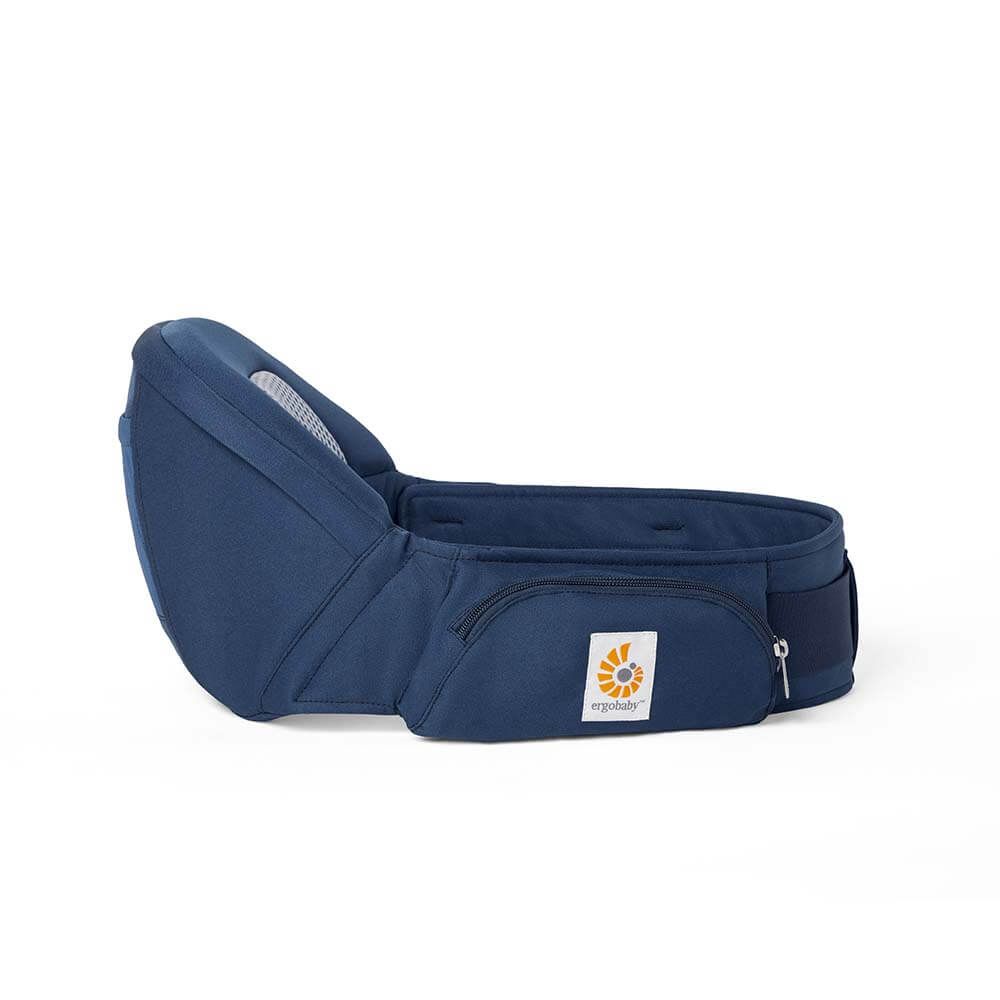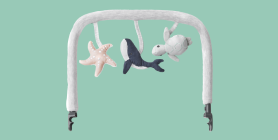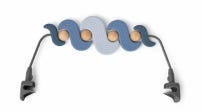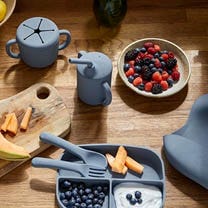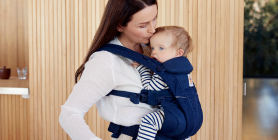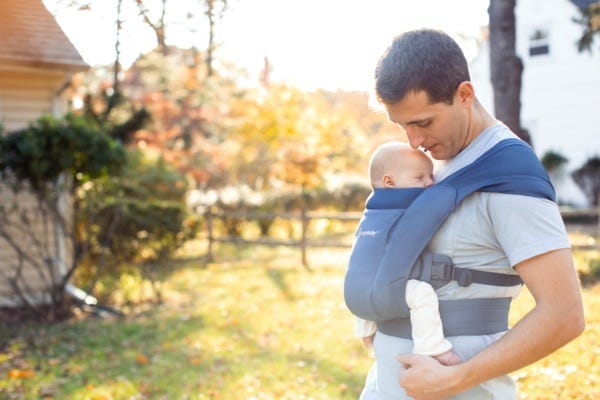Have you ever thought of giving birth at home? Perhaps you have not chosen this option if you have given birth in the U.S., as so few women have – currently around 0.67%. Consequently, there is only a relatively small chance that you know someone who has personally had the experience of giving birth at home. For some, it may seem unfamiliar that a birth at home should give you a greater level of security and satisfaction with your birth. However, in this article, we will examine a variety of the aspects that differ between a home birth and a hospital-based birth. And although you may in fact never choose to deliver at home, some of the features of a home birth may be an inspiration for the way you choose to give birth in a hospital. In the small, but relatively progressive country of Denmark in Northern Europe, with a population roughly equal to that of the state of Wisconsin, a group of midwives has been working over the past twenty years in close and mutually beneficial collaboration with obstetricians and hospitals to provide high quality home births. They are simply called “The Home Birth Group.” In the region where their services are available to the general public, the rate of home births has steadily grown to 4.5% of all spontaneous births. This growth has come about by word of mouth and chat room experience sharing, as the vast majority of the participating mothers has been extremely appreciative about their experience and the care they received. And, interestingly, the midwives involved are also very content with the quality of service they are able to deliver, and express great enthusiasm for their work. As we all know, competence combined with a genuine love for one’s craft is an unbeatable combination, especially when it comes to something as emotionally significant as birth. In the eyes of “The Home Birth Group” midwives, a birth is not a medical condition that needs to be cured. A birth is likely to be one of the most intense events in a woman’s life and it draws naturally on the inherent strengths and resources of the individual woman. And for that reason, the preparations, the environment and the people surrounding the birth all either empower or weaken the birthing woman in her own endeavors to bring forth a new life. In order for any prospective mother to be able to assess which type of birthing arrangement will suit her best, a relatively systemic or encompassing view of the entire process is required. To reduce security of birth to the availability of medical interventions may just be too narrow a view. But what better way of describing the salient features of a home birth - and thereby implicitly contrasting the home birth experience with how most hospital-based births are prepared and carried out - than giving the floor to one quite reflected and eloquent mother of two. This Danish mother, Karen Pedersen, has gone through two home deliveries, the most recent one with the help of “The Home Birth Group.” She has also had a long-standing interest in discussing birth experiences with other mothers who gave birth in hospitals. “Giving birth at home under the home birth scheme (or support team) is a luxury I would want all pregnant women to have as an option for their choice of birth place. With the home birth scheme you get the whole package: knowing your midwives, home consultations, birth tub, maternity care and midwives who make a difference and who clearly love their work. The entire family was completely confident about the birth – even our oldest 3-year-old daughter. Our birth assistants had also participated in one of the many home consultations, which made them certain of their role. The many home consultations (minimum 7) are a key feature of the program. Consultations which had as their only focus the pregnant woman and her family. Consultations that take the time they take, without constant glimpses at the clock and the impending arrival of the next pregnant woman. Consultations that take the time to cover everything from expectations of the birth to the older sister’s gymnastic games. We knew our midwives, and they knew us. I was not reduced to “another-one-in-the-line-of-this-workday’s-birthing women.” I felt like a whole woman with a family that also needed to be prepared for the birth. This meant that as the day finally arose, we did not need to talk about a “wish list” for the birth or to tune in on one another. This gave great comfort and encouragement to us - and to the midwives. The maternity days became the ultimate in care, where we talked with our midwives every day, had a visit and even had the heel prick test done at home. This gave a calm environment which ensured a good start on my breastfeeding, and also the chance to talk the birth through and to make the family extension become part of normal family life. I really had a feeling of being taken care of and thought of, of not being trouble to anyone. The telephone was open 24 hours, just as it had been during pregnancy. That is sheer luxury. The consultations were also a high point for our daughter, who was allowed to attend and listen in. This gave rise to much midwife playing where she felt my stomach and listened with a stethoscope. As the mother does not have to leave the house for several days, which is normally the case for a hospital birth, the siblings do not experience a loss. “Mom is still here for me, and soon with the sister/brother that I too have been longing for.” We are convinced that this has been one of the main reasons we have completely avoided sibling jealousy. We never forget her smile and her happy eyes when she saw her new little sister for the first time. It was love at first sight. To become a father is a wonderful thing. To see one’s loved one give birth can be an ordeal for some men. Under these circumstances, my husband has experienced the birth as undramatic and homely. When choosing to deliver at home, you naturally opt out on many things. I am frequently asked about pain relief. For me pain is about security. When I am secure, I can handle more. I have loved my contractions. I was in the space where I felt the most secure, with people I knew, and I knew the pain was good and productive – it made me a mother and it resulted in life. To give birth is one of the greatest experiences in life. To share it with people I know and trust is the right thing for me. I needed to have the full ownership of my birth. I decided myself what I wanted to eat, when I was going to be examined, and who should surround me. I have been very secure about laying my birth in the hands of my midwives and never doubted that they were making the right choices regarding my birth. If a transfer to a hospital were to become necessary, I knew they would accompany me and still be my midwives, so even the thought of a possible transfer did not disturb me. I trusted their competence. To be a secure birthing woman is a fantastic experience and may even lead to easier births.“ It is this kind of emotionally strong testimonials that have helped gradually increase the rate of home births to the present 4.5% in this region of Denmark. However, one should also bear in mind that such a relatively high rate of home births requires a seamless cooperation between the home birth midwives and the participating hospitals and obstetricians, a well thought out organization and a reasonable work load. Now, this may all be well for those fortunate Danes who can participate in that program, but what about the bigger picture? How prevalent is home birth in other countries and perhaps most importantly, what are the hard statistics regarding outcomes and medical interventions for home births and for hospital births? And economic costs involved? In most economically developed countries, less than 1% of all births are carried out at home. One country stands out; Holland, where the home birth rate is still around 30% and where the country has a century-long uninterrupted tradition for home births. This alone ought to vouch for the benefits and safety of home birthing as a concept and system. It is utterly impossible that the Dutch – in their highly advanced society - could overlook significant differences in infant and maternal health and mortality outcomes between home births and hospital births for decades. A range of prospective and retrospective studies confirm that the outcomes in terms of safety are equal in the two types of settings. The significant difference is that there are fewer medical interventions in the home births (epidurals, artificial induction of labor via e.g. pitocin, episiotomy, etc.). In societies where birth has become politicized due to clashing interests of different professional groups, studies are sometimes proffered that indicate higher risks associated with home birth. However, these findings are contradicted in the responses from investigators in countries where the professional climate is less tense concerning who ought to be in charge of births. It is, naturally, extremely important to conduct a competent pre-screening for potential birth issues before deciding for a home birth. However, most healthy normal women bearing one child are, in principle, eligible for a home birth. A range of other factors need to be in place as well: experienced midwives who are thoroughly trained in the many time-honored tools and approaches of the trade and who are given the time to acquaint themselves with the individual pregnant woman through several pre-birth consultations; relative closeness to a hospital in case of the need for a transfer; and well-established relations with hospital-based obstetricians who agree with the concept. One should also bear in mind, that, according to investigations, an average of approximately 12-15% of the home births end up in a controlled transfer to a hospital – so one in seven or eight births is completed at the hospital, but - and this is an important point for many women - accompanied by the midwife who has been following the pregnant woman throughout her pregnancy. One of the points frequently highlighted by home birthing women is their comfort, feeling they have adequate, even ample time with the midwife, and the resultant complete absence of stress about limited time. This is often contrasted with the same women’s previous experiences with the hospital birth. Normally, more professional time also equals higher costs. However, in the case of home births this seems not to be the case. Calculations from The Danish “Home Birth Group” indicate that home births are on average 20% less expensive than hospital births. And, if the greater incidence of medical interventions in hospital births is also factored into the cost calculation, home births become even more relatively economic. It is a question of replacing costs of hospital medical procedures and management (nurses, obstetricians, cleaning personnel, equipment, laundry, etc.) with professional time spent at the pregnant women’s home. In principle, this ought to make the establishment and management of a home birth organization attractive to private medical insurance companies as well. In “The Home Birth Group” program, time is allocated for a follow-up home visit after the birth, which gives the new mother the chance to recount her birth experience with her midwife and share her own views on the birth. I think that we can all relate to the need to talk about such a fundamental and deeply emotional event with the very people who participated in the process. However, that is rarely done in hospital settings due to time constraints. The follow up visit also ensures that there is emotional and professional support for the vital initiation of breastfeeding and for eliminating any concerns over the newborn’s health status, especially in first time mothers. And what’s more, “The Home Birth Group” midwives also organize seasonal festive gatherings where “their” mothers (their birthing clients) are invited to attend with their children. In this way, the contact can be maintained, even in the years that follow, under relaxed and structured circumstances. This also gives the midwives the chance to share the joy of “their” children’s growth and development, and the mothers the opportunity to maintain the bond to their midwife. Every birth marks the beginning of a unique lifelong adventure and relationship. And every woman wants to begin that relationship in the best possible way. Surely, for a great variety of reasons, home birth is not for everyone in this day and age, but a well-structured approach to home birth does represent some important aspects of how a good and emotionally secure and empowering birth can come to fruition.
Resources: General overview on home birth http://www.midwiferytoday.com/articles/homebirthchoice.asp Scientific investigation into safety aspects of home birth - “Outcomes of planned home birth with registered midwife versus planned hospital birth with midwife or physician” http://www.cmaj.ca/cgi/reprint/181/6-7/377 The Danish Home Birth Group http://www.hjemmefoedsler.dk/ My Best Birth’s list of Midwives and Doulas, www.mybestbirth.com http://www.mybestbirth.com/page/midwives-doulas-1
Emotional Benefits of Getting Outside
Spending time in nature with your baby can strengthen the bond between you. The simple act of holding your baby close, feeling their warmth, and sharing new experiences together can create strong emotional connections. It’s also a wonderful way to reduce stress and improve your mood. When my littles were extra fussy, I’d take a walk around the neighborhood. Even though I don't live in an area with trails and surrounded by nature, simply behind outside changed everything. A little vitamin D does wonders!
Cognitive Development
Nature is a sensory wonderland for babies. The different sights, sounds, and smells can stimulate your baby’s senses and promote cognitive development. Watching leaves rustle, hearing birds chirp, and feeling the texture of a tree bark can all contribute to their learning and development.
All About Baby Carriers for Nature Adventures
Choosing the Right Baby Carrier
When it comes to selecting the best baby carrier for summer adventures, there are several options to consider.
Types of Baby Carriers:
- Wraps: Perfect for newborns, providing a snug and secure fit.
- Slings: Ideal for quick and easy use, offering good ventilation.
- Soft Structured Carriers: Versatile and comfortable for both parent and baby, suitable for longer trips.
Factors to Consider:
- Baby’s Age and Weight: Ensure the carrier is appropriate for your baby’s size and weight. For example, Ergobaby’s Embrace Newborn Carrier is perfect for the fourth trimester where baby is small and you’re looking for an easy way to stay close. As they grow, you’ll want to upgrade to an all-position carrier that’s meant for growing babies.
- Parent’s Comfort and Ergonomics: Look for carriers with padded shoulder straps and lumbar support if you’re planning on longer outings.
- Ease of Use: Choose a carrier that is easy to put on and take off.
- Climate and Breathability: Opt for carriers made of breathable fabrics to keep you and your baby cool in hot weather.
Safety Tips:
- Proper Positioning: Ensure your baby is seated correctly, with their legs in an "M" position and their head should be close enough to kiss.
- Checking for Wear and Tear: Regularly inspect your carrier for any signs of damage.
- Ensuring Adequate Support: Make sure the carrier provides proper support for your baby’s head and neck.
Exploring Nature with a Baby Carrier
Ideal Spots for a Nature Walk with Baby
- Parks and Gardens: Great for leisurely walks and picnics.
- Nature Trails and Forests: Perfect for more adventurous outings.
- Beaches and Lakesides: Wonderful for enjoying the water and sand, with the right carrier.
Activity Ideas
- Hiking: Enjoy a scenic hike with a hiking baby carrier that offers support and storage.
- Bird Watching: Use your carrier to keep your baby close while you explore and observe wildlife.
- Picnics: A carrier can free up your hands, making it easier to carry picnic supplies.


Advantages of Using Strollers for Nature Adventures
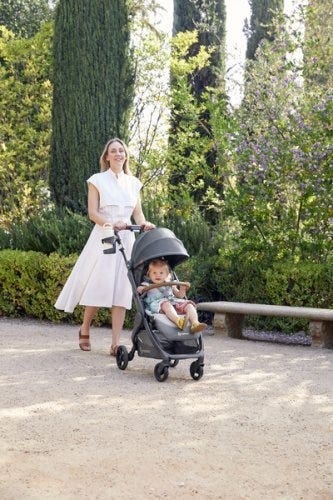

While baby carriers are fantastic for mobility and closeness, depending on the adventure of choice you might want to be a stroller along too.
There are a LOT of baby stroller options on the market. So we understand how confusing it can be to choose the one that’s right for your family. Not only are there a variety of brands, but a variety of strollers that serve different purposes.
There are a few types of strollers on the market:
- Full-sized stroller: This is typically the stroller parents thing of buying for all its versatility.
- Lightweight or umbrella stroller:These compact strollers are perfect for on-the-go adventures.
- Jogging stroller: Designed for parents who want to combine fitness with outdoor adventures.
- Double stroller: Designed for parents with multiple kids, especially twins.
- Car seat carrier: These strollers connect to a specific car seat. We don't typically recommend these as they can be unsafe for baby and uncomfortable for parents who are pushing.
Learn more about the types of strollers and which one would be best for you.
Benefits of Bringing a Stroller
- Storage Space for Gear: Ample room for carrying all your essentials like a diaper bag, beach toys and more.
- Shade and Weather Protection: Built-in canopies to shield your baby from the sun when they are lounging.
- Options: If you have more than one kid, you can stroll with one and carry the other. Or, if you’re getting warm or your little one is getting fussy, you can switch up their position from stroller to carrier or vice versa.
Safety Tips for Strollers
- Ensure your stroller is in good working condition. Make sure buckles are still buckling and that there are no rips or holes that could compromise your baby’s safety.
- Use sunshades or bug nets to protect your little one’s skin.
- Securing the baby properly: always buckle up your baby for safety even if you think they are old enough to go without the buckle.
Combining Baby Carriers and Strollers
For the ultimate flexibility, consider using both a baby carrier and a stroller on your outings.
Combining both options allows you to adapt to different situations. Use the carrier for more rugged trails and switch to the stroller for smoother paths or when your baby needs a nap.
Transition Tips
- Smooth Transitions: Plan stops where you can easily switch from carrier to stroller.
- Pack Light: Only bring essentials to make transitions easier.
Tips for a Successful Adventure
Planning Ahead
- Route Planning: Choose baby-friendly trails and parks. Check local mom groups or outdoor groups and get recommendations for the best outings for kids.
- Check Weather Conditions: Avoid extreme heat or unpredictable weather. Even with our most breathable carriers, when it’s hot, it’s hot. And having two bodies against each other in the heat will be naturally hot and sticky already.
- Packing Checklist: Include diapers, snacks, water, sunscreen, and a first-aid kit. These all-position carriers have storage pockets where you can fit some of the items easily!
- Stay Hydrated and Nourished: Pack healthy snacks to keep energy levels up and bring plenty of water for both you and baby.
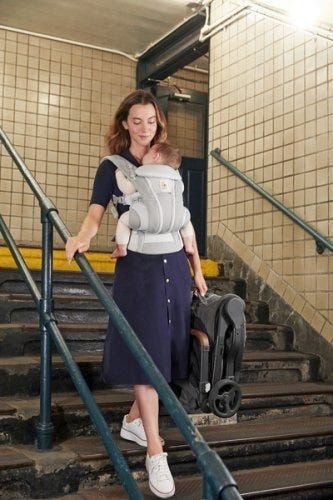

Summer adventures with your baby are a wonderful way to create lasting memories and enjoy the beauty of nature together. From baby carriers to strollers, Ergobaby products are designed to provide comfort and ease for both you and your little one. So, gear up, get outside, and explore the world with your baby by your side.
Ready to embark on your own summer adventures? Check out Ergobaby’s range of baby carriers and strollers to find the perfect match for your family’s needs. Visit our website today and start planning your next outdoor excursion!





